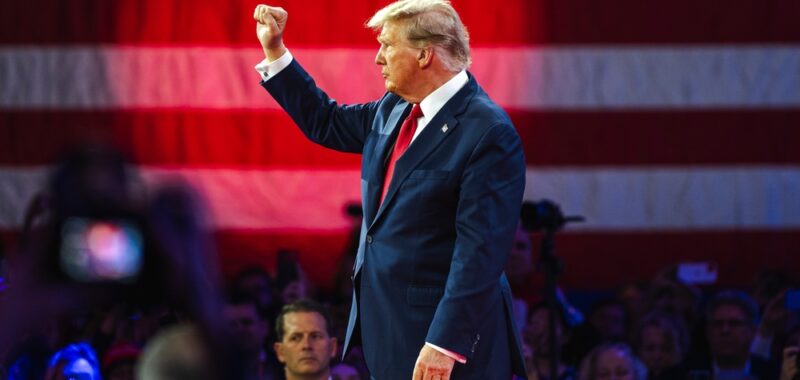The breakdown in security leading to the attempted assassination of Donald Trump can be compared to the multifactorial failure inherent in medical errors. Both scenarios involve complex systems where multiple layers of defense and prevention are designed to avoid catastrophic outcomes. When these layers fail, it often results from a combination of human error, systemic issues, and procedural flaws.
Both presidential security and health care systems are highly complex and require coordination among various components. In health care, this includes medical staff, administrative processes, and technological systems. Similarly, presidential security involves coordination among security personnel, intelligence agencies, and logistical planning. Why did no one arrange to have drones flying overhead?
Human error can play a significant role in both cases. For instance, lapses in vigilance, miscommunication, or failure to follow protocols can contribute to both security breaches and medical errors. Trump’s shooter was on the local radar immediately prior to the rally, and he was identified to the Secret Service. How did he manage to prevail?
Systemic flaws such as inadequate training, poor communication channels, and insufficient resources can lead to failures. In health care, this might manifest as understaffing or lack of proper equipment. In presidential security, it could involve gaps in intelligence or insufficient security measures. The building used by the shooter to perpetrate his scheme was deemed outside the security perimeter. Why?
Both fields rely on a series of preventive measures designed to mitigate risks. In medicine, this includes checklists, double-check systems, and standardized procedures. In security, this involves background checks, security protocols, and surveillance systems. When these measures are not properly implemented or fail, the risk of a critical incident increases. Trump’s shooter escaped surveillance and lay in waiting on a rooftop less than 150 yards away from the podium at which Trump spoke. How was the shooter able to get so close to the former president?
After an incident, both fields conduct thorough investigations to understand the root causes and prevent future occurrences. In health care, this might be a morbidity and mortality (M&M) conference or a root cause analysis (RCA). In security, it could be an internal review or a congressional investigation. Both areas require constant vigilance and continuous improvement. Lessons learned from failures are used to enhance protocols, improve training, and upgrade systems to prevent future incidents. A Congressional hearing and other investigations will be held to fully evaluate the incident. How long will it take before the results are known?
In summary, both the failure in presidential security leading to an attempted assassination and medical errors in health care share similarities in their multifactorial nature, involving complex systems, human factors, systemic issues, preventive measures, root cause analysis, and continuous improvement. Understanding these parallels can help in developing better strategies to prevent such critical failures in both fields. Such strategies might include:
1. Addressing human factors. To mitigate human error, organizations can implement comprehensive training programs emphasizing critical thinking, situational awareness, and protocol adherence. For instance, in health care, simulation-based training allows medical professionals to practice responding to emergency scenarios in a controlled environment, reducing the likelihood of errors in real-life situations. Similarly, security personnel can engage in regular drills and exercises that mimic potential threats, ensuring they are well-prepared to respond effectively.
2. Enhancing communication. Another crucial strategy is keeping open lines of communication. In both fields, clear and effective communication can prevent misunderstandings and ensure that all team members are on the same page. This can be achieved through standardized communication protocols, regular briefings and debriefings, and fostering a culture where team members feel comfortable speaking up about potential issues.
3. Systemic improvements. Adequate staffing levels are essential. In health care, this means having enough medical professionals to handle patient loads without compromising care quality. In security, this involves having sufficient personnel to cover all necessary posts and respond to potential threats.
4. Investing in infrastructure and technology. Spending in this area is crucial. For health care, this might mean equipping hospitals with the latest medical devices and electronic health records systems to streamline patient care. In security, advanced surveillance systems, secure communication channels, and modern protective equipment can enhance the ability to detect and respond to threats.
5. Preventive measures. In health care, checklists can ensure that all necessary steps are taken during surgeries or other medical procedures, reducing the risk of oversight. In presidential security, standardized procedures for threat assessment, access control, and emergency response can create a robust framework for protecting the president.
6. Risk assessment and management. Both fields can benefit from adopting proactive risk assessment techniques to identify and address potential vulnerabilities before they lead to failures. This might involve regular audits, threat assessments, and the development of contingency plans to handle unexpected situations.
7. Continuous improvement. Creating a culture of continuous learning involves encouraging team members to share their experiences and insights and fostering an environment where feedback is valued and acted upon. In health care, this often entails regular M&M meetings where medical professionals discuss cases and learn from each other. In security, after-action reviews following drills or actual incidents can provide valuable insights for improving protocols and responses.
By leveraging these strategies, both fields can enhance their ability to prevent critical failures and ensure better outcomes. Neither a patient’s health nor a president’s welfare should ever be taken for granted.
Arthur Lazarus is a former Doximity Fellow, a member of the editorial board of the American Association for Physician Leadership, and an adjunct professor of psychiatry at the Lewis Katz School of Medicine at Temple University in Philadelphia, PA. He is the author of several books on narrative medicine, including Medicine on Fire: A Narrative Travelogue and Narrative Medicine: Harnessing the Power of Storytelling through Essays.



